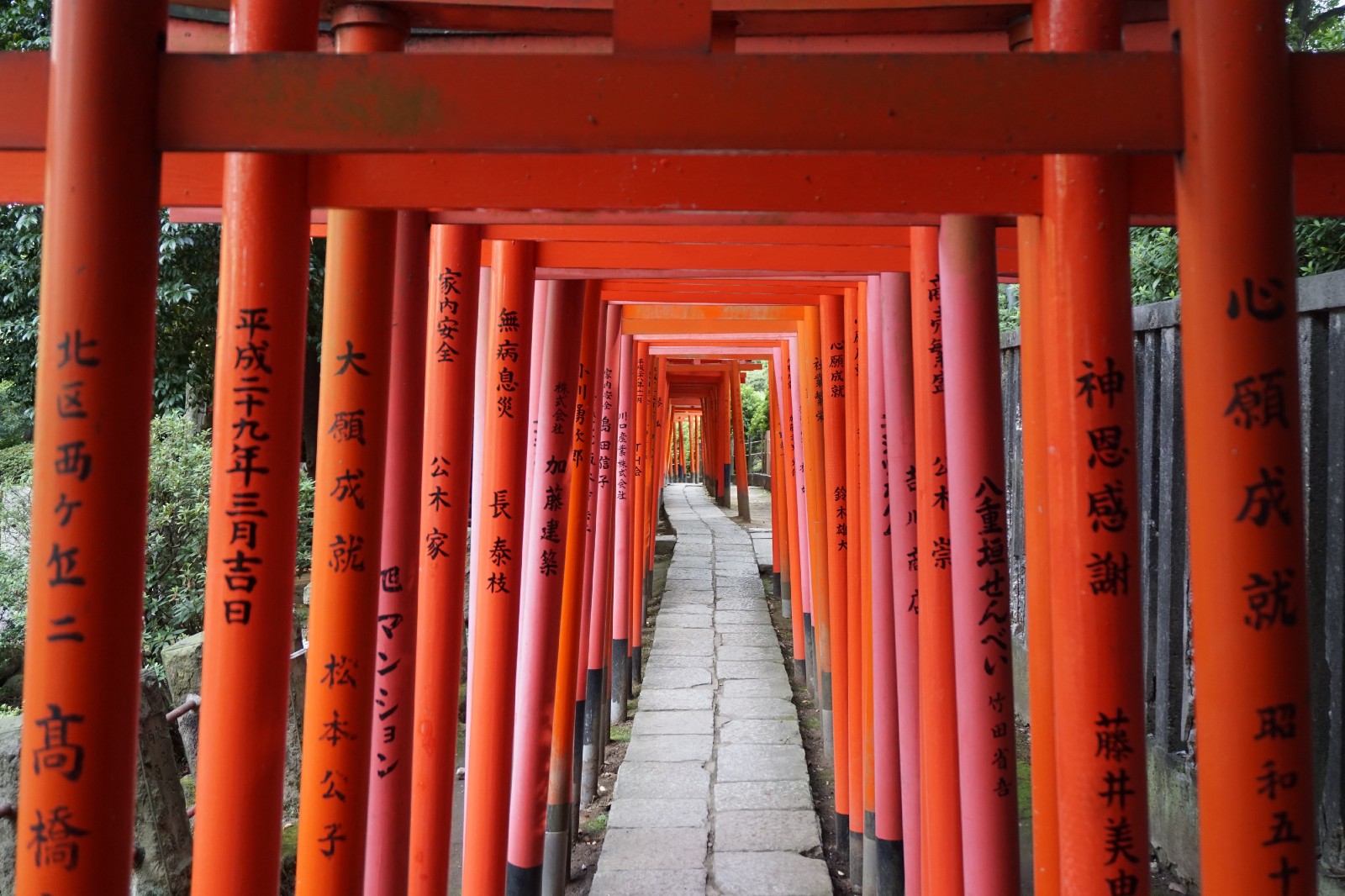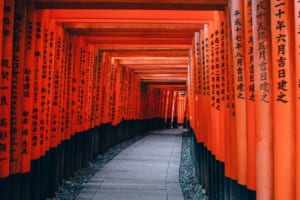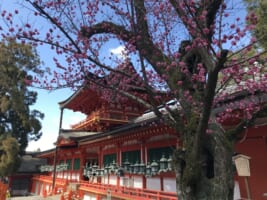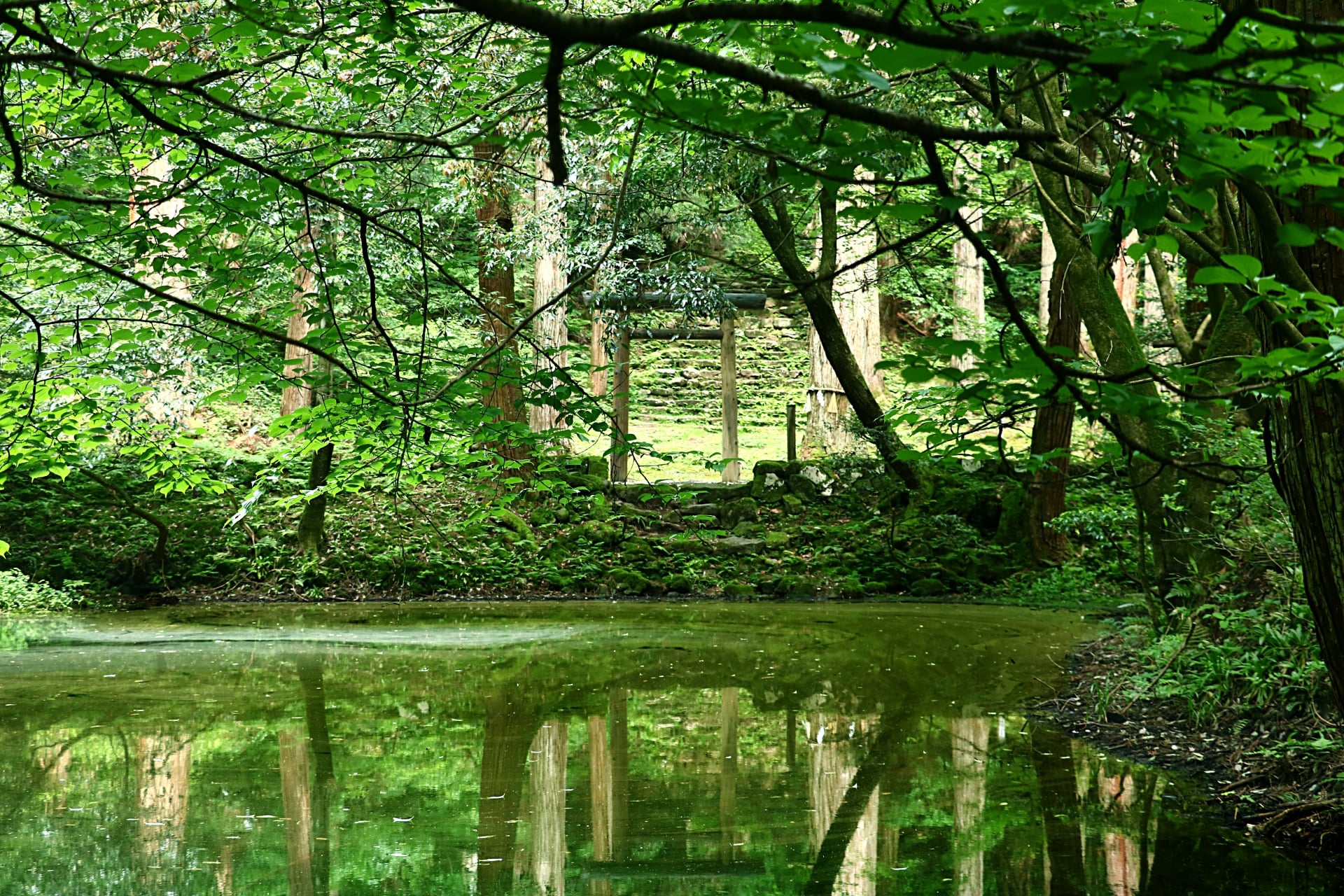15 Best Shrines in Japan
Spiritual Treasures: Exploring Japan's Must-Visit Shinto Shrines

One of the things that makes Japan such an attractive country to visit is the uniqueness of its culture. Many people from all around the world have come in touch and are intrigued by it, and want to get to know as much as possible when visiting this fascinating land.
What better way to start getting in touch than by visiting Shinto Shrines? Shrines are what completely separate Japan from the rest of the world culturally, so it makes sense that you’d like to get to know some of these sacred places. There’s one problem though. There are over 88,000 of these shrines across the country, so how to know which one to visit?
That is where hopefully, this article will come in handy! Embark on a spiritual journey as we unveil the 15 best shrines in Japan. From the serene moss-covered grounds of Heisenji Hakusan Shrine to the vibrant cherry blossom spectacle at Hirano Shrine, join us as we explore these remarkable sanctuaries, where ancient traditions and natural wonders intertwine.
History of Shinto Shrines
Before going to our list of the best shrines, let me share with you a little basic info about Shinto Shrines.
Shinto shrines in Japan have a long history dating back thousands of years. Rooted in the indigenous belief system of Japan, Shintoism developed as a complex blend of animism, nature worship, and ancestor veneration. Shrines evolved as sacred spaces for rituals, ceremonies, and the worship of various deities associated with nature and ancestral spirits.
Shrines in Japan can be categorized into various types. Jinja, or general shrines, are dedicated to various deities. Hachiman shrines honor the war god Hachiman, while Inari shrines venerate the fox deity Inari. There are also imperial shrines, regional shrines, and even shrines dedicated to specific purposes such as health or prosperity. So, if you have a specific reason you want to visit a shrine in Japan (if you want to pray for something specific), then it may be good if you check which one is best for you beforehand.
Top 10 Shrines in Japan
1. Ise Grand Shrine (Ise, Mie Prefecture)

The shrine’s unique architectural style, characterized by simplicity and thatched roofs, showcases Japan’s traditional design. Surrounded by lush forests, the shrine complex harmoniously blends with nature, invoking a serene atmosphere. Pilgrims and visitors are awestruck by the pristine beauty of the nearby Isuzu River and the tranquil atmosphere of the surrounding Ise-Shima National Park, making it an enchanting destination for cultural and natural exploration. If you happen to plan to travel nearby, this is a MUST-visit!
 Access Access |
6 minute bus ride from Isuzugawa Station (Kintetsu Railway) |
|---|---|
 Official Website Official Website |
https://www.isejingu.or.jp/en/index.html |
2. Meiji Shrine (Tokyo)

As you stroll through the majestic Torii gate and along the peaceful pathways, the towering trees create a serene atmosphere, inviting visitors to contemplate amidst nature’s embrace. Meiji Shrine is a captivating blend of history, spirituality, and natural beauty in the vibrant cityscape.
 Access Access |
1 minute walk from Harajuku Station (JR Yamanote Line) |
|---|---|
 Official Website Official Website |
https://www.meijijingu.or.jp/en/ |
For more information about this shrine, be sure to check out the following article.
3. Fushimi Inari Taisha (Kyoto)
Next is one of the most famous shrines among foreign visitors. Fushimi Inari Taisha (伏見稲荷大社), situated in Kyoto, is a captivating shrine renowned for its iconic feature: the Senbon Torii gates (千本鳥居). These vibrant vermillion gates form a breathtaking pathway that stretches up the slopes of Mount Inari. The shrine is dedicated to the kami Inari, associated with prosperity and success.
As you embark on the enchanting hiking trail leading to the mountaintop, you’ll be rewarded with awe-inspiring views of Kyoto’s picturesque scenery. Lush forests, serene shrines, and stone fox statues believed to be Inari’s messengers, create an ethereal atmosphere.
 Access Access |
5 minute walk from Inari Station (Nara Line) |
|---|---|
 Official Website Official Website |
http://inari.jp/en/ |
For more information about this shrine, be sure to check out the following article.
4. Itsukushima Shrine (Miyajima, Hiroshima Prefecture)

The shrine’s distinctive architectural style was ingeniously crafted to adapt to the island’s tidal changes. During high tide, the vermilion gate appears to float on the water, creating a mesmerizing sight. The intricate details of the shrine’s construction, harmonizing with the natural surroundings of the island, evoke a sense of awe and tranquility.
 Access Access |
From Miyajimaguchi Station (Sanyo LIne), go to Miyajimaguchi Port and take the ferry to Miyajima Island (10 minutes by ferry). |
|---|---|
 Official Website Official Website |
https://www.itsukushimajinja.jp/en/ |
For more information about this shrine, be sure to check out the following article.
5. Nikko Toshogu Shrine (Nikko, Tochigi Prefecture)

As you approach the shrine’s entrance, you’ll be enthralled by the richly embellished Yomeimon Gate, showcasing exquisite craftsmanship. The vibrant colors, gold leaf accents, and detailed carvings of mythical creatures captivate the imagination. Each structure within the shrine complex reveals a remarkable fusion of artistry and spirituality. Nikko Toshogu Shrine is a treasure trove of Japanese history and craftsmanship, inviting visitors to immerse themselves in its majestic splendor.
 Access Access |
10 minutes by bus from Tobu-nikko Station (Nikko-Kinugawa Line or Tobu Nikko Line) |
|---|---|
 Official Website Official Website |
https://www.toshogu.jp/ |
6. Tsurugaoka Hachimangu (Kamakura, Kanagawa Prefecture)
Next on our list, we have Tsurugaoka Hachimangu (鶴岡八幡宮). This shrine is located in Kamakura, Kanagawa prefecture, and holds immense significance as the spiritual heart of the city. This revered shrine serves as a center of worship and cultural heritage.
Its beautiful gardens, meticulously maintained, offer a serene escape from the bustling city. As you approach the shrine, a grand stone staircase leads you to the main hall, creating a dramatic and awe-inspiring experience. The towering trees, vibrant cherry blossoms (in spring), and tranquil ponds further enhance the shrine’s enchanting atmosphere.
 Access Access |
10 minute walk from Kamakura Station (JR Lines and Enoshima Electric Railway) |
|---|---|
 Official Website Official Website |
https://www.hachimangu.or.jp/en/ |
For more information about this shrine, be sure to check out the following article.
7. Kasuga Taisha (Nara)

When you explore the shrine’s enchanting surroundings, you’ll discover the picturesque Nara Park, where friendly deer roam freely. These gentle creatures, considered sacred messengers, add a touch of whimsy to the experience. The harmonious blend of spirituality, ancient traditions, and the gentle presence of deer make Kasuga Taisha and its surrounding Nara Park an unforgettable destination for visitors seeking cultural immersion and natural beauty.
 Access Access |
13 minutes walk from Kintetsu Nara station (Kintetsu Limited Express) |
|---|---|
 Official Website Official Website |
https://www.kasugataisha.or.jp/ |
For more information about this shrine, be sure to check out the following article.
8. Izumo Taisha (Izumo, Shimane Prefecture)

Izumo Taisha (出雲大社), located in Shimane prefecture, holds tremendous significance as one of the country’s oldest and most revered Shinto sites. It is believed that every October, the kami (deities) from across Japan gather at Izumo Taisha, making it a sacred place of immense spiritual power.
The shrine’s impressive architecture, characterized by its grandeur and simplicity, stands as a testament to Japan’s rich cultural heritage. Visitors are captivated by the majestic main hall and the tranquil atmosphere that permeates the surrounding grounds. Izumo Taisha offers a unique glimpse into ancient Shinto traditions and a profound connection to Japan’s spiritual roots.
 Access Access |
5 minute walk from Izumotaisha-Mae Station (Ichibata Densha-Taisha Line) |
|---|---|
 Official Website Official Website |
https://izumooyashiro.or.jp/ |
9. Sumiyoshi Taisha (Osaka)
The next shrine on this list is Sumiyoshi Taisha (住????大社), located in Osaka. This Shinto Shrine is dedicated to the Sumiyoshi deities, known as guardians of travelers and sailors. It holds profound cultural and historical significance.
As you approach the shrine, you’ll be greeted by the distinctive “sorihashi” arched bridge, symbolizing the transition from the ordinary world to the sacred realm. The bridge’s elegant curves and wooden construction add a touch of grace to the entrance. Inside the shrine, visitors can experience a serene and spiritual atmosphere, offering solace and protection for those embarking on journeys.
 Access Access |
1 minute walk from Sumiyoshitoriimae Station (Hankaidenki-Hankai Line) |
|---|---|
 Official Website Official Website |
https://www.sumiyoshitaisha.net/en/ |
For more information about this shrine, be sure to check out the following article.
10. Nezu Shrine (Tokyo)

The shrine’s vibrant azalea blooms, especially during spring, create a kaleidoscope of colors, offering a breathtaking sight. So much so that there’s even an annual Azalea Festival in this very shrine.
As you explore further, you’ll discover a stunning pathway adorned with a tunnel of red torii gates, forming an enchanting walkway. The contrast between the fiery red gates and the lush greenery is truly mesmerizing.
 Access Access |
6 minute walk from Nezu Station (Tokyo Metro Chiyoda Line) |
|---|---|
 Official Website Official Website |
http://www.nedujinja.or.jp/ |
For more information about this shrine, be sure to check out the following article.
Photogenic Shrines
11. Oarai Isosaki Shrine (Oarai, Ibaraki Prefecture)
Oarai Isosaki Shrine (大洗磯前神社), situated in Ibaraki, is a captivating destination with its stunning oceanside location. The shrine’s allure lies in its picturesque torii gate that stands gracefully in the water, creating a scene of serenity and natural beauty.
When approaching the gate, the mesmerizing view of the sea and the distant horizon unfolds, offering a tranquil atmosphere. The contrast between the vibrant orange gate and the deep blue waters is a photographer’s delight.
 Access Access |
15 minutes by bus from Oarai Station (Kashimarinkai Tetsudo Oarai-Kashima Line) |
|---|---|
 Official Website Official Website |
https://www.oarai-isosakijinja.net/ |
12. Motonosumi Inari Shrine (Yamaguchi Prefecture)

What sets this shrine apart is its stunning approach of 123 bright red torii gates standing along the cliff overlooking the Sea of Japan. The gates create a breathtaking pathway that leads visitors to the shrine’s main hall. The striking contrast between the vibrant red gates, the azure sea, and the picturesque coastal landscape makes for a truly captivating sight.
 Access Access |
20 minutes by taxi from Nagato-Furuichi Station (San-In Line) |
|---|---|
 Official Website Official Website |
https://www.motonosumi.com/ |
For more information about this shrine, be sure to check out the following article.
13. Hirano Shrine (Kyoto)

The annual cherry blossom festival held at Hirano Shrine further enhances its photogenic appeal. The combination of the shrine’s traditional architecture, the vibrant colors of the cherry blossoms, and the ethereal atmosphere make it a dreamlike setting for photography.
 Access Access |
7 minute walk from Kitanohakubaicho Station (Randen) |
|---|---|
 Official Website Official Website |
https://www.hiranojinja.com/home/english-page |
Unique Shrines
14. Zeniarai Benten Shrine (Kamakura, Kanagawa Prefecture)

Known for its unusual ritual, people wash their money in the sacred spring water, believed to multiply their wealth and bring good fortune. As you approach the shrine, you’ll walk through a tunnel carved into the rock, creating an atmospheric and mystical entrance. The serene natural surroundings, with lush greenery and the soothing sound of flowing water, add to the tranquility.
Zeniarai Benten Shrine is dedicated to the goddess Benzaiten, associated with wealth, music, and water, making it a captivating destination for those seeking blessings of prosperity and a serene connection with nature.
 Access Access |
20 minute walk from Kamakura Station (Enoden Line, JR Lines) |
|---|---|
 Official Website Official Website |
https://www.city.kamakura.kanagawa.jp/visitkamakura/en/ |
For more information about this shrine, be sure to check out the following article.
15. Heisenji Hakusan Shrine (Fukui Prefecture)
And lastly, on our list, we have the Heisenji Hakusan Shrine (平泉寺白山神社). This incredible Shinto shrine is nestled in Ishikawa prefecture and offers a serene and mystical experience to visitors.
Its unique allure lies in the shrine’s moss-covered grounds, creating an ethereal atmosphere that transports you to a different realm. The lush green carpet of moss adds a sense of tranquility and natural beauty.
The shrine is nestled within a peaceful forest setting, further enhancing its enchantment. It holds a deep connection to the Hakusan mountain deity, representing the power of nature and spirituality.
 Access Access |
20 minute bus ride from Katsuyama Station (Echizentetsudo-Katsuyama-Eiheiji Line) |
|---|---|
 Official Website Official Website |
http://heisenji.jp/ |
▽Subscribe to our free news magazine!▽
For more information about Shrines and Japanese culture, be sure to check the articles below.
▽ Related Articles ▽
▼ Editor’s Picks ▼
Written by
Born and raised in Costa Rica, I started living in Tokyo from college. I love traveling within Japan & around the world. Since I wasn’t born in Japan, I know the cultural impact that you can get when visiting Japan for the first time and what you might be worried about before your trip. And I’ve lived long enough to somewhat understand the nuances of the Japanese culture that make this country such an attractive place to visit. Hopefully I can provide to you both the information you’re looking for and the information you didn’t know you needed to know.



























